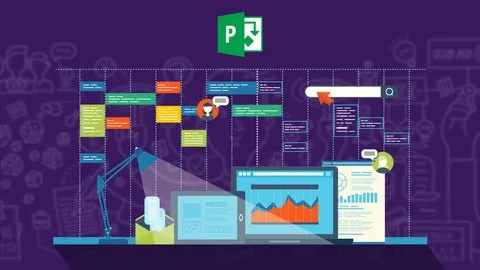
Sign Language Science: Factors Contributing to Nature Structure 
This course explores the factors that contribute to the structure of sign language. Professor Ted Supalla will guide students through examples of how changes in a sign can alter its meaning. Students will gain an understanding of the complexities of sign language and how it is used to communicate. ▼
ADVERTISEMENT
Course Feature
![]() Cost:
Cost:
Free
![]() Provider:
Provider:
Edx
![]() Certificate:
Certificate:
Paid Certification
![]() Language:
Language:
English
![]() Start Date:
Start Date:
Self paced
Course Overview
❗The content presented here is sourced directly from Edx platform. For comprehensive course details, including enrollment information, simply click on the 'Go to class' link on our website.
Updated in [March 06th, 2023]
This course, Sign Language Science: Factors Contributing to Nature Structure, will provide an overview of the various factors that contribute to the structure of sign language. Led by Professor Ted Supalla, students will explore how alterations within a sign can change its meaning and how this can affect word order in a sentence. Additionally, students will gain an understanding of the layered, cumulative approach to sign language grammar. By the end of the course, students will have a comprehensive understanding of the various factors that contribute to the structure of sign language.
[Applications]
The application of this course can be seen in the field of sign language science. After completing this course, students will have a better understanding of the factors that contribute to the structure of sign language. This knowledge can be used to develop better methods for teaching sign language, as well as to create more accurate translations of sign language into written language. Additionally, this course can be used to inform research into sign language and its structure, which can lead to a better understanding of how sign language works.
[Career Paths]
1. Sign Language Interpreter: Sign language interpreters are responsible for translating spoken language into sign language and vice versa. They must be able to accurately interpret the meaning of the language and be able to convey it in a way that is understandable to the recipient. As sign language becomes more widely accepted, the demand for interpreters is increasing, making this a great career path for those interested in sign language science.
2. Sign Language Teacher: Sign language teachers are responsible for teaching sign language to students of all ages. They must be able to effectively communicate the language and its structure to their students. As sign language becomes more widely accepted, the demand for teachers is increasing, making this a great career path for those interested in sign language science.
3. Sign Language Researcher: Sign language researchers are responsible for studying the structure of sign language and its various components. They must be able to analyze the language and its various components in order to better understand how it works. As sign language becomes more widely accepted, the demand for researchers is increasing, making this a great career path for those interested in sign language science.
4. Sign Language Translator: Sign language translators are responsible for translating written documents into sign language. They must be able to accurately interpret the meaning of the language and be able to convey it in a way that is understandable to the recipient. As sign language becomes more widely accepted, the demand for translators is increasing, making this a great career path for those interested in sign language science.
[Education Paths]
1. Bachelor's Degree in Sign Language Interpreting: A Bachelor's Degree in Sign Language Interpreting is a great way to gain a comprehensive understanding of the structure of sign language. This degree program will cover topics such as linguistics, language acquisition, and the history of sign language. It will also provide students with the skills to interpret and translate sign language into spoken language. As the demand for sign language interpreters continues to grow, this degree path is becoming increasingly popular.
2. Master's Degree in Sign Language Studies: A Master's Degree in Sign Language Studies is a great way to gain a deeper understanding of the structure of sign language. This degree program will cover topics such as linguistics, language acquisition, and the history of sign language. It will also provide students with the skills to interpret and translate sign language into spoken language. Additionally, this degree path will provide students with the opportunity to explore the latest research and developments in the field of sign language studies.
3. Doctorate Degree in Sign Language Science: A Doctorate Degree in Sign Language Science is a great way to gain a comprehensive understanding of the structure of sign language. This degree program will cover topics such as linguistics, language acquisition, and the history of sign language. It will also provide students with the skills to interpret and translate sign language into spoken language. Additionally, this degree path will provide students with the opportunity to explore the latest research and developments in the field of sign language science, such as the use of technology to enhance sign language communication.
4. Certificate in Sign Language Interpreting: A Certificate in Sign Language Interpreting is a great way to gain a basic understanding of the structure of sign language. This certificate program will cover topics such as linguistics, language acquisition, and the history of sign language. It will also provide students with the skills to interpret and translate sign language into spoken language. As the demand for sign language interpreters continues to grow, this certificate path is becoming increasingly popular.
Course Provider

Provider Edx's Stats at AZClass
Sign Language Science: Factors Contributing to Nature Structure explores the factors that influence the structure of sign language. Professor Ted Supalla will guide students through examples of how changes in gestures can change their meaning. Learners learn about the science behind sign language and the factors that affect its natural structure. This lesson will provide an overview of the structure of sign language, including how changes in sign language change its meaning, and how this affects the order of words in a sentence. It will also explore various factors that affect sign language grammar, such as facial expressions, body language and the use of gestures. In addition, learners will understand the cumulative method of sign language and how it can be used to create more complex sentences.
Discussion and Reviews
0.0 (Based on 0 reviews)
Explore Similar Online Courses

How to Create Watercolor Figures on Your iPad in Procreate + FREE Digital Watercolor Brushes

Microsoft Project Basics - How to Create Your First Project

Python for Informatics: Exploring Information

Social Network Analysis

Introduction to Systematic Review and Meta-Analysis

The Analytics Edge

DCO042 - Python For Informatics

Causal Diagrams: Draw Your Assumptions Before Your Conclusions

Whole genome sequencing of bacterial genomes - tools and applications

Learn & Master Sign Language

Indian Sign Language and Sign Quiz


Start your review of Sign Language Science: Factors Contributing to Nature Structure